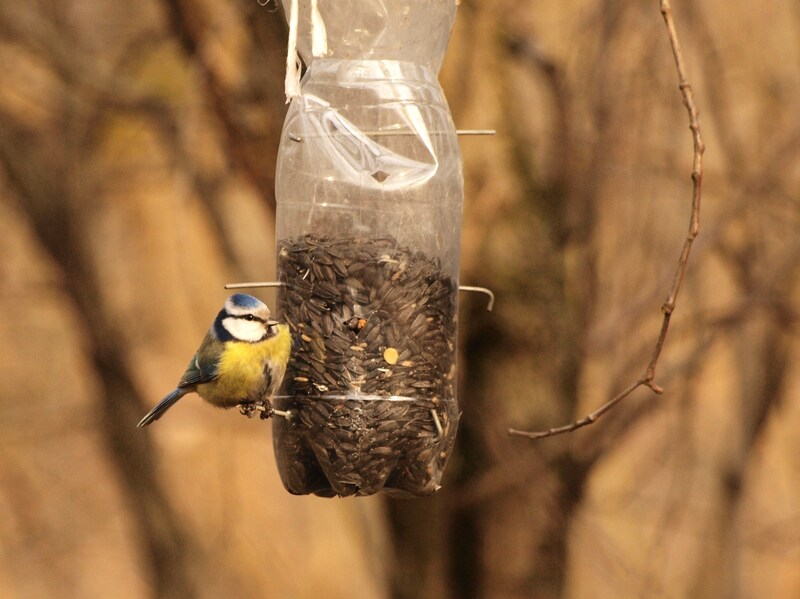A Second Chance for Old Cookware: Smart Disposal and Recycling
Out with the old, in with the sustainable! When your trusted pots and pans are beyond their cooking days, what's the right way to say goodbye? This comprehensive guide explores how you can give old cookware a second life through smart disposal, recycling, upcycling, and responsible practices.

Why Proper Cookware Disposal Matters
Cookware is often overlooked when it comes to recycling and responsible waste management. However, just tossing out old pots, pans, or baking sheets can significantly increase landfill burden and diminish the chance for resource recovery. Many types of cookware contain valuable metals and materials that can be reused or recycled, helping conserve energy and reducing the environmental impact of mining and manufacturing new products.
- Aluminum and stainless steel are recyclable metals found in many types of cookware.
- Cookware can sometimes be repurposed for artistic or practical applications.
- Improper disposal, especially of nonstick pans, can introduce chemicals into our environment.
Environmental Impact of Old Cookware
Most cookware items are made to withstand heat, which means they do not easily break down in landfills. Nonstick pans, in particular, may release potentially harmful compounds if incinerated or left to degrade. By making smart choices, you can help prevent potential pollution and instead contribute to a circular economy.
Identifying Your Cookware's Material: Know Before You Recycle
Before disposing of old cookware, it's important to identify what it's made from. Here are the common types:
- Stainless Steel - Very common and highly recyclable.
- Aluminum - Lightweight, sometimes with a nonstick or enameled coating.
- Cast Iron - Extremely durable and recyclable.
- Copper - Often lined with tin or stainless steel.
- Nonstick Coated - Contains PTFE (Teflon) or other coatings.
- Ceramic - Can be trickier to recycle, may be used for upcycling.
*Pro tip: Check for markings on the bottom of the cookware or refer to brands' websites for material information.
How to Dispose of Old Cookware Responsibly
Main Pathways for Giving Cookware a Second Life
- Donation - If the cookware is still in usable condition, give it away.
- Recycling - For broken or unusable cookware, recycle materials appropriately.
- Upcycling - Repurpose for crafts, storage, or decoration.
- Safe Disposal - Last resort for non-recyclable materials.
1. Donate Usable Cookware
If your old pots and pans still work but you're simply upgrading, donate them to local charities, shelters, or thrift stores. Organizations such as Goodwill, Salvation Army, or local homeless shelters often accept gently used kitchenware. Just make sure:
- Handles aren't loose.
- There are no major chips, cracks, or warps.
- Nonstick coatings are not peeling.
Donation extends the lifespan of cookware and helps those in need.
2. Recycle Old Cookware: The Right Way
For cookware that's no longer fit for use, recycling is the next best option. Start by calling your local recycling center to ask about their policy on metal cookware. Most facilities accept uncoated metal items, but plastics, rubber, and nonstick coatings may not be recyclable through curbside pickup.
- Remove non-metal parts such as plastic handles, knobs, or silicone elements, if possible.
- Separate materials when dealing with mixed materials (e.g., aluminum pan with steel handle).
- Scrap Metal Yards: These are generally the best places for old cookware, especially cast iron, stainless steel, copper, and aluminum items. Depending on current metal prices, you might even earn a small cashback!
Note: Nonstick pans (Teflon or ceramic coated) often require special handling due to their chemical coatings. Contact your municipality or the manufacturer for guidance.
3. Upcycle: Creative Reuse of Old Cookware
Old cookware doesn't always belong in recycling bins -- sometimes, it's primed for a new artistic or functional existence! Upcycling lets you turn seemingly useless pots, pans, and bakeware into charming home decor or practical items.
- Garden planters - Use large pots as flower containers or herb planters.
- Wall decor - Turn attractive lids, pans, or colanders into wall art.
- Storage - Use deep pots or baking trays as storage bins around the home.
- Candle mold - Repurpose old muffin tins as creative candle molds.
- Organizing tools - Hang pans from hooks or use trays in workshops for tools and screws.
*Encourage children's creativity or your own DIY projects by imagining new uses for old cookware!
4. Responsible Disposal of Non-Recyclable Cookware
When all else fails, check for hazardous waste collection days in your area, especially for nonstick or coated cookware. Some retailers even offer take-back programs for their old products. Never burn or illegally dump cookware, as it may release toxic substances or pose safety hazards.
Special Considerations: Nonstick and Coated Cookware
Nonstick pans typically feature a surface made of polytetrafluoroethylene (PTFE, or Teflon) or ceramic. These coatings, while convenient, complicate the recycling process:
- The PTFE layer does not break down naturally and can release toxic fumes if the pan is overheated or incinerated.
- Many recycling centers cannot process nonstick coatings, so specialized programs are necessary.
- Some brands like Calphalon or GreenPan have mail-back programs for old cookware disposal.
Best Practice: Always check manufacturer websites for recycling or disposal information for nonstick cookware. If your local facility won't accept it, ship directly to a company program, or dispose of during designated hazardous waste collection days.
Cookware Recycling: Step-by-Step Guide
Ready to recycle your old pans? Here's a streamlined process:
- Assess Condition: Is the pan usable? Consider donation first!
- Identify Material: Check for labels indicating aluminum, stainless steel, cast iron, copper, or coated materials.
- Prepare the Item: Remove all food debris, clean thoroughly, and disassemble detachable parts (handles, knobs, etc.).
- Contact Local Facilities: Call ahead to your nearest recycling center or scrap metal yard and confirm acceptance.
- Drop Off: Bring parts to the correct collection point, carefully separating if needed.
Remember: Never mix nonstick or hazardous cookware with regular recyclables unless explicitly allowed by your local program.
The Benefits of Recycling Old Pots and Pans
When you opt for smart disposal and recycling of your old cookware, you're doing more than just freeing up cupboard space. Here's why it matters:
- Conservation of Resources - Metal recycling saves raw materials and energy compared to primary production.
- Reduction of Waste - Every recycled pan is one less item in landfill, keeping our earth cleaner.
- Supporting the Green Economy - Scrap metal yards and recycling programs support local jobs and green industries.
- Environmental Protection - Smart disposal limits the release of hazardous materials into the environment.
Did You Know?
Recycling one ton of steel saves approximately 2,500 pounds of iron ore, 1,400 pounds of coal, and 120 pounds of limestone! Even a single pan contributes when recycled properly.
How to Reduce Future Cookware Waste
If you want to minimize the need for frequent disposal or recycling, start with sustainable choices today:
- Buy durable cookware: Invest in high-quality items designed for longevity (e.g., cast iron, stainless steel).
- Avoid single-use or disposable bakeware: Opt for reusables whenever possible.
- Care for your cookware: Follow cleaning and maintenance instructions to extend the lifespan of your pots and pans.
- Seek eco-friendly brands: Some companies use recycled materials and offer take-back schemes for old items.

Frequently Asked Questions about Old Cookware Disposal and Recycling
Can I put pots and pans in my curbside recycling bin?
Usually not. Most curbside recycling programs do not accept cookware, as they require specialized sorting and processing. Always check with your local municipality.
How do I recycle nonstick pans?
Special care is needed due to chemical coatings. Some manufacturers offer mail-in recycling programs. Otherwise, bring them to a hazardous waste facility or follow local guidelines.
What should I do with broken ceramic cookware?
Most ceramics aren't accepted by regular recycling centers--it's often best to repurpose or upcycle them for crafts, mosaics, or garden drains.
Is cast iron recyclable?
Yes! Cast iron is highly prized by scrap metal recyclers due to its high metal content and density.
Are there any retailers who accept old cookware?
Some major retailers (e.g., Bed Bath & Beyond, Williams Sonoma) occasionally offer trade-in events or take-back programs. Check with your local store for options.
Conclusion: Give Old Cookware a Second Chance
Don't let your old pots, pans, or bakeware clutter up the landfill! Through donation, recycling, upcycling, or responsible disposal, you can reduce waste and may even discover a creative project along the way.
The next time you replace a worn-out frying pan, think twice before tossing it out. By choosing smart disposal and recycling for old cookware, you help conserve resources, support your community, and protect the environment--giving those pots and pans a well-deserved second chance.
- Contact your local recycling facility for details on accepted materials.
- Check with manufacturers for recycling or take-back programs.
- Donate usable items rather than throwing them away.
- Get creative with upcycling projects for broken or outdated pieces.
With a little effort, you can make smart choices for your old cookware and the environment. Every recycled, donated, or upcycled piece is a win for sustainability!
